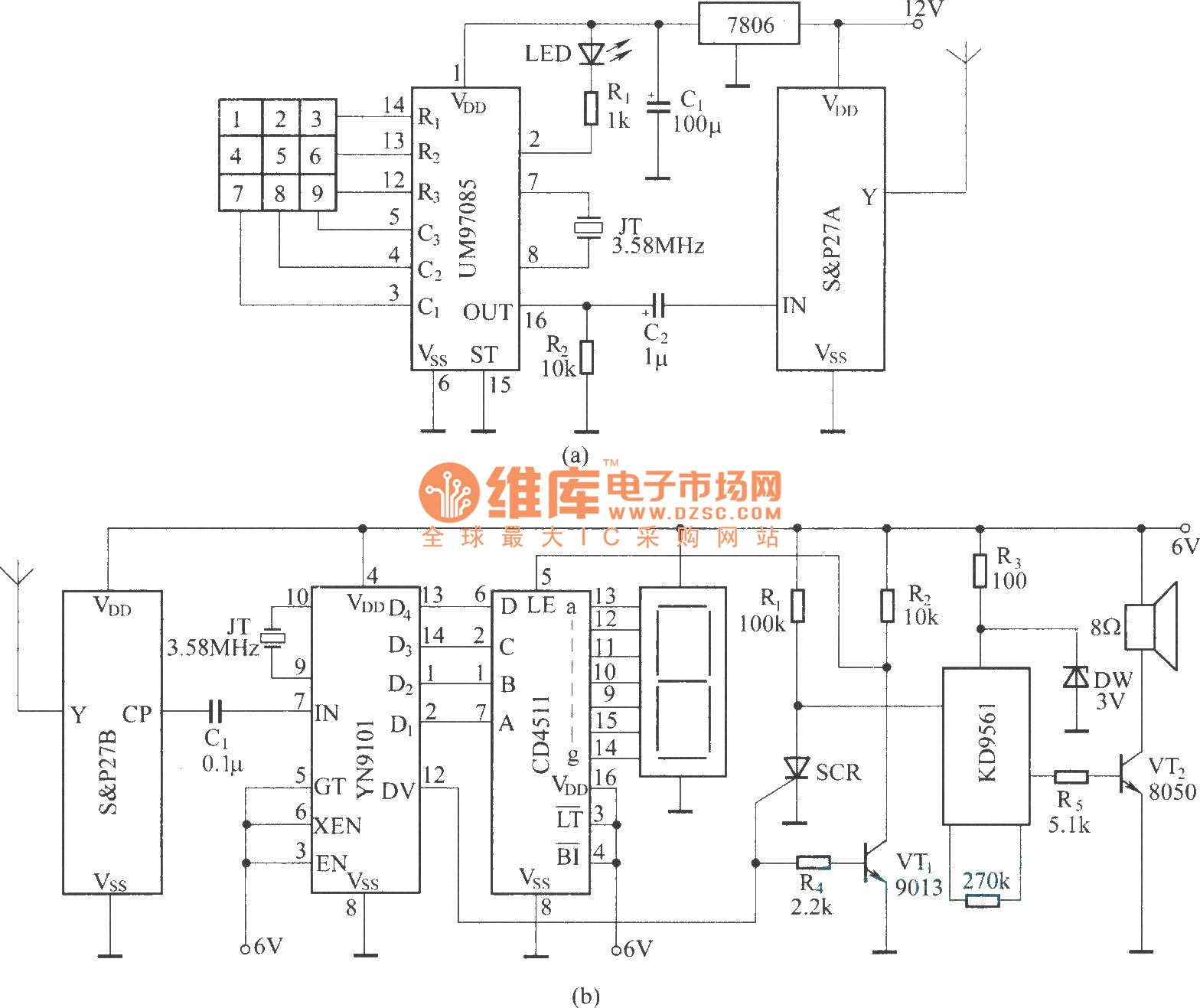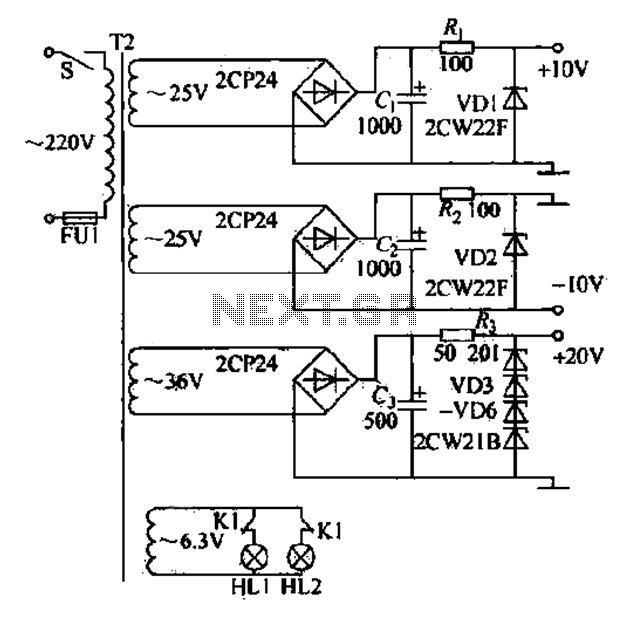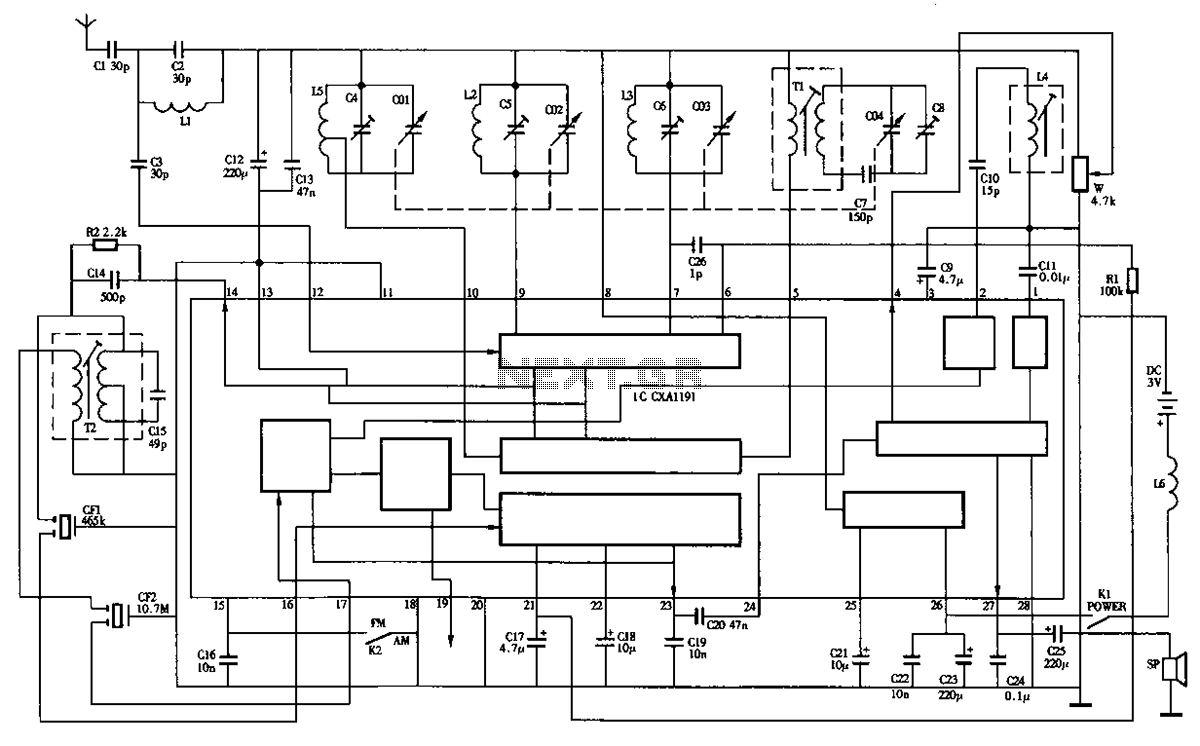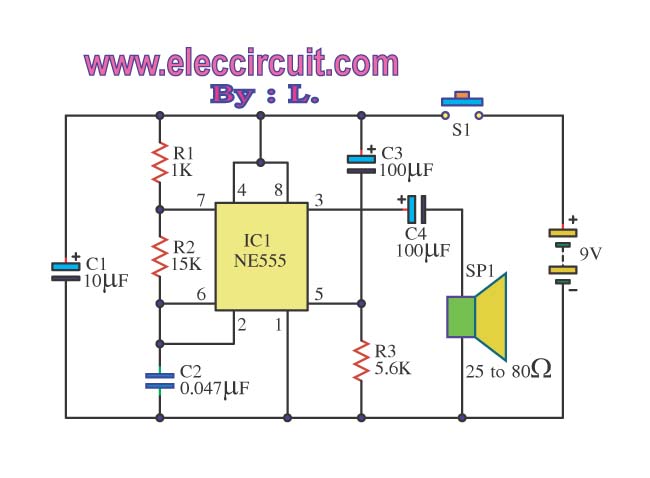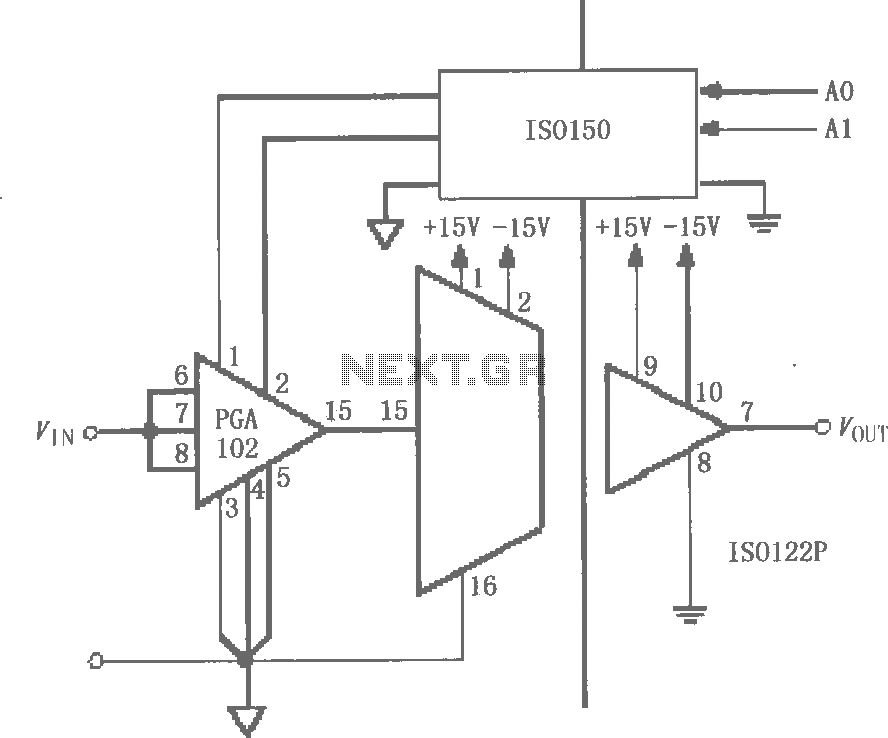
VOLTMETER WITH IMPROVED LINEARITY CIRCUIT DIAGRAM
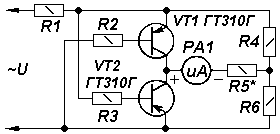
The device employs a microammeter with a full-scale deflection of 50 µA and a resistance of 2 kilohms. The upper limit of the voltmeter's measuring range is 1 V, and within the range of 0.2 to 1 V, the measurement error due to scale nonlinearity is less than 1% of the full-scale range. The calibration of the voltmeter is achieved by selecting the values of resistor R3 at the midpoint of the scale and resistor R1 at the endpoint of the scale. The linearization of the right side of the scale is accomplished through the base current, which generates a voltage drop across resistor R2. This results in a reduction of the rectifier gain towards the end of the scale as needed. For measurement ranges of 3.5 volts and above, the use of a silicon transistor in the rectifier is recommended. For a voltmeter with a range of 10 V utilizing the KT3102D transistor, the error due to scale nonlinearity is approximately 2% at 1 V and less than 0.1% in the range of 2 to 10 V. The circuit component parameters are as follows: R1 - 20 kilohms, R2 - 180 kilohms, and R3 - 62 kilohms. A full-wave rectifier voltmeter can be constructed using transistors of the same p-n-p type as illustrated in the accompanying figure. The resistance values of resistors R4 and R6 are roughly determined by the relation: R < Un/2In, where Un is the measurement range and In is the full-scale deflection current of the microammeter. The input impedance of this voltmeter exceeds that of a bridge circuit utilizing four transistors, as the measured network is loaded with two resistors at the bases of the transistors instead of four. Additionally, the availability of two transistors of the same type simplifies sourcing. The limits of measurement can be extended by incorporating an additional voltage divider, which provides a current significantly greater than the base current. However, using extra resistors to shift the balance during calibration may compromise the linearity of the scale.
The voltmeter circuit is designed to utilize a microammeter to measure voltage levels accurately within specified ranges while minimizing errors associated with nonlinearity. The microammeter, with its low full-scale deflection current, allows for precise measurements, particularly in sensitive applications. The selection of resistors R1, R2, and R3 is critical for calibration, ensuring that the measurements remain within acceptable error margins across the operational range.
The rectification process is achieved through the use of p-n-p transistors, which are configured to form a full-wave rectifier. This configuration allows for effective conversion of alternating current (AC) signals to direct current (DC), which is necessary for the microammeter to display voltage readings accurately. The choice of silicon transistors for higher voltage ranges enhances the circuit's reliability and performance, as they provide better thermal stability and lower leakage currents compared to other types of transistors.
The input impedance is an important parameter, as it affects the voltmeter's interaction with the source being measured. A higher input impedance ensures that the voltmeter does not significantly load the circuit under test, thereby maintaining the integrity of the measurement. The design also allows for the incorporation of an additional voltage divider to expand the measurement range, although care must be taken to avoid compromising linearity through the introduction of additional calibration resistors.
Overall, this voltmeter design is a robust solution for precise voltage measurement, with careful consideration given to component selection, calibration, and circuit configuration to achieve optimal performance across various measurement scenarios.The device uses a microammeter with full scale deflection of 50 uA and with the resistance of 2 kilohms. The upper limit of the measuring range of the voltmeter is 1 V, and in the range of 0. 2. 1 V the measurement error due to the nonlinearity of the scale is less than 1% of the full scale range.
By selection of the resistor R3 values the voltmeter is calibrated at the middle of the scale, and by selection of the resistor R1 values - in the end of the scale. The linearization of the right side of the scale achieved due to the base current, which creates a voltage drop across the resistor R2.
Because of this the gain of the rectifier are reduced to the end of the scale as required. If the measurement range is 3. 5 Volts and above, then it is better to use a silicon transistor in the rectifier. This voltmeter for the range of 10 V with the transistor KT3102D, has an error due to the nonlinearity of the scale at range of 1 V about 2%, and in the range of 2. 10 V - less than 0. 1% of the full scale range. Parameters of the circuit components are: R1 - 20 kilohm, R2 - 180 kilohms, and R3 - 62 kilohms. A voltmeter with a full-wave rectifier can be implemented with transistors of the same p-n-p type as shown in Fig.
2. The resistance of the resistors R4, R6 is roughly determined from the relation: R
The use of additional resistors shifting the balance achieved in the calibration, and the linearity of the scale gets worse. 🔗 External reference
The voltmeter circuit is designed to utilize a microammeter to measure voltage levels accurately within specified ranges while minimizing errors associated with nonlinearity. The microammeter, with its low full-scale deflection current, allows for precise measurements, particularly in sensitive applications. The selection of resistors R1, R2, and R3 is critical for calibration, ensuring that the measurements remain within acceptable error margins across the operational range.
The rectification process is achieved through the use of p-n-p transistors, which are configured to form a full-wave rectifier. This configuration allows for effective conversion of alternating current (AC) signals to direct current (DC), which is necessary for the microammeter to display voltage readings accurately. The choice of silicon transistors for higher voltage ranges enhances the circuit's reliability and performance, as they provide better thermal stability and lower leakage currents compared to other types of transistors.
The input impedance is an important parameter, as it affects the voltmeter's interaction with the source being measured. A higher input impedance ensures that the voltmeter does not significantly load the circuit under test, thereby maintaining the integrity of the measurement. The design also allows for the incorporation of an additional voltage divider to expand the measurement range, although care must be taken to avoid compromising linearity through the introduction of additional calibration resistors.
Overall, this voltmeter design is a robust solution for precise voltage measurement, with careful consideration given to component selection, calibration, and circuit configuration to achieve optimal performance across various measurement scenarios.The device uses a microammeter with full scale deflection of 50 uA and with the resistance of 2 kilohms. The upper limit of the measuring range of the voltmeter is 1 V, and in the range of 0. 2. 1 V the measurement error due to the nonlinearity of the scale is less than 1% of the full scale range.
By selection of the resistor R3 values the voltmeter is calibrated at the middle of the scale, and by selection of the resistor R1 values - in the end of the scale. The linearization of the right side of the scale achieved due to the base current, which creates a voltage drop across the resistor R2.
Because of this the gain of the rectifier are reduced to the end of the scale as required. If the measurement range is 3. 5 Volts and above, then it is better to use a silicon transistor in the rectifier. This voltmeter for the range of 10 V with the transistor KT3102D, has an error due to the nonlinearity of the scale at range of 1 V about 2%, and in the range of 2. 10 V - less than 0. 1% of the full scale range. Parameters of the circuit components are: R1 - 20 kilohm, R2 - 180 kilohms, and R3 - 62 kilohms. A voltmeter with a full-wave rectifier can be implemented with transistors of the same p-n-p type as shown in Fig.
2. The resistance of the resistors R4, R6 is roughly determined from the relation: R
The use of additional resistors shifting the balance achieved in the calibration, and the linearity of the scale gets worse. 🔗 External reference
